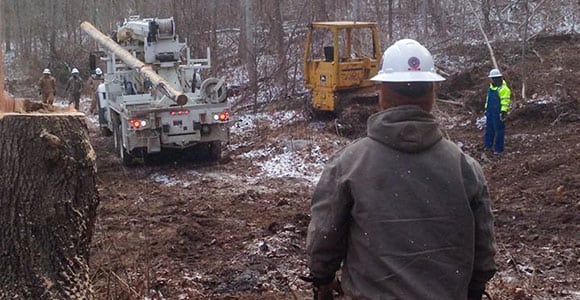The ice has melted, and burst water lines are repaired. Little evidence is left of the record cold weather — other than high heating bills. As painful as the financial impact is, the alternative could have been much more uncomfortable.
The extreme temperatures pushed the Tennessee Valley Authority to a new record demand as we all tried to stay warm. With heating systems running nonstop, lines and substations were pushed to their limits. In a few instances, the strain caused temporary outages.
Occasionally, experts make harsh assessments about the condition of our electric grid. The fact is, TVA, a very reliable generation and transmission network, successfully handled this challenge.
How much energy?
As the polar vortex moved in on Monday, Jan. 6, consumers in the Tennessee Valley used 683 gigawatt-hours of electricity. The next day was even colder with an average temperature of 4 degrees. TVA reached a peak demand that day of 32,490 megawatts, its second-highest all-time peak. By the end of the day, we set a new use record — 703 gigawatt-hours.
A big number but exactly how much electricity is that? The average home uses about 1,200 kilowatt hours each month. In just 24 hours, we used 703,000,000 kilowatt hours. That’s enough electricity to power almost 50,000 homes for an entire year. That is a lot of power.
Where did TVA get the energy?
On that record-setting day, TVA got electricity from everywhere it could to meet the need. The mix included:
- 28 percent from coal-fired plants
- 21 percent from nuclear plants
- 14 percent from combined cycle natural gas plants
- 11 percent from hydroelectric dams
- 10 percent from conventional gas turbines
- 2 percent from renewables (wind)
- 13 percent purchased off the competitive power market — and not at bargain-basement prices.
Under normal operations, TVA generates power as cheaply as possible. During periods of high demand, TVA generates or purchases power based on need — not efficiency, not economics. There are a number of responsibilities of an electric utility, and keeping the power on is pretty high on the list, especially during life-threatening temperature extremes.
How close did we come?
When major utilities near their limits of capacity, they’re required to notify the North American Energy Reliability Council (NERC). Nine utilities, including TVA, contacted NERC and declared that they were in an Energy Emergency Alert 2, which is the last step before they run out of energy. The area impacted reached from Texas to Florida to New York. Only South Carolina ultimately had to resort to rolling blackouts.
What lessons are to be learned?
First and foremost is this: It is critically important that we have every available weapon in our arsenal. If you remove coal completely from the energy portfolio, the outcome above is quite different. That’s not a theory; it’s simple math. Every energy source has benefits, limitations and drawbacks.
Second is that utilities are powered by dedicated people. When temperatures finally crested the freezing mark, dispatchers, linemen and plant operators breathed sighs of relief. Some were able to see their families for the first time in several days. But the ultimate praise is that millions of Tennesseans avoided having to experience outages.
Third, the vortex became a stark reminder of what we’ve said for years: By removing coal from the mix, the Environmental Protection Agency (EPA) is doing the opposite of what is needed. Extremes emphasize the need for an all-of-the-above approach to generating electricity from nuclear, coal, natural gas, fuel oil and renewables.
We don’t know when the next polar vortex might arrive. Whenever it does, we’ll be prepared. But an unnecessary, manmade power vortex — created by the EPA — could leave us all in the cold.



